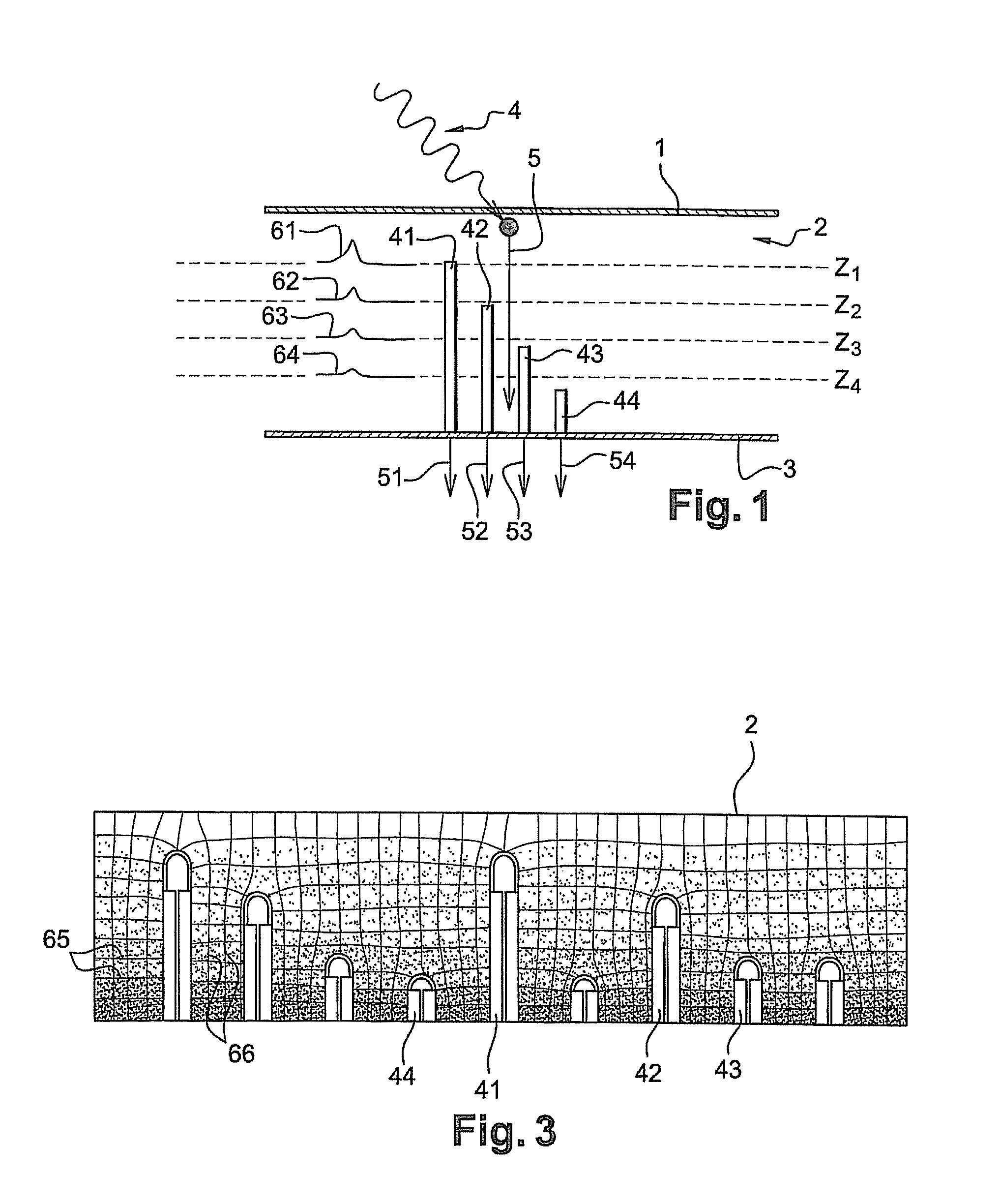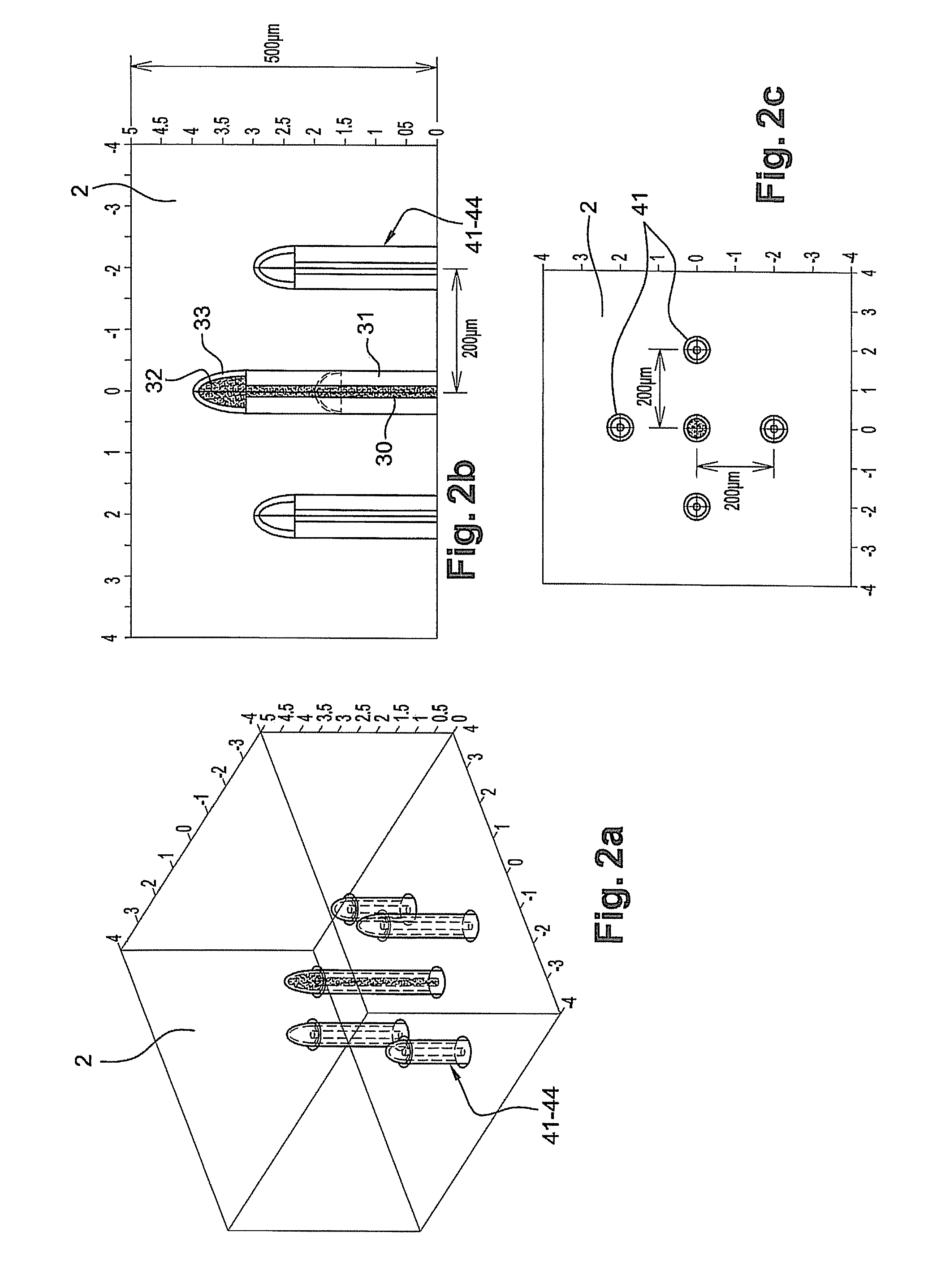Radiation detection device
a radiation detection and detector material technology, applied in radiation measurement, instruments, electrical equipment, etc., can solve the problems of limited effective thickness of detector material, poor charge carrying properties of solid materials of such detectors, and inability to achieve good charge carrying properties of solid materials, etc., to achieve the effect of limiting the charge carrying properties of the detector material and the effect of reducing the size of the detector
- Summary
- Abstract
- Description
- Claims
- Application Information
AI Technical Summary
Benefits of technology
Problems solved by technology
Method used
Image
Examples
first embodiment
[0037]In FIG. 1 a cross-sectional view of an ionizing radiation detector in accordance with the invention has been shown schematically.
[0038]Basically, this detector includes a stack of a first set of electrodes (1), in the case in point constituted by a unitary cathode, a material sensitive (2) to ionizing radiation, such as for example one made out of an alloy of cadmium, zinc and tellurium (CdZnTe), and a second set of electrodes (3), constituted for example by an anode array. The electrode sets (1) and (3) are polarized so as to create between them, and therefore through the detection material (2), an electric field.
[0039]The material constituting the detector itself (2) may also be made out of semi-conductor material such as Si, GaAs, Ge, InP, CIS, of even of semi-conductor polymers. The thickness of said material is typically between a few hundred micrometers and a few millimeters, or even more than that. As already stated supra, detection efficiency is directly related to the...
second embodiment
[0097]The mode of manufacturing this second embodiment is identical to the previous one, the holes made in the detector material preferentially being through holes.
[0098]Consequently, as may be imagined, implementing the invention means first of all that spatial information about the interaction point is delivered in a straightforward way, and on the other hand that detection materials can be employed that have hitherto been unusable on account of the reduced length of the charge carrying, and are therefore less expensive.
[0099]Simulations have been made allowing the charge induced in a through non-collecting electrode, according to the second embodiment, to be evaluated. Said simulations are shown in relation to FIGS. 9 to 13.
[0100]FIG. 9 shows a solid detector, in which can be distinguished the polarization electrodes (cathodes and anodes), and a non-collecting electrode (70), arranged perpendicular to the electric field resulting from the polarization. Said non-collecting electro...
PUM
 Login to View More
Login to View More Abstract
Description
Claims
Application Information
 Login to View More
Login to View More - R&D
- Intellectual Property
- Life Sciences
- Materials
- Tech Scout
- Unparalleled Data Quality
- Higher Quality Content
- 60% Fewer Hallucinations
Browse by: Latest US Patents, China's latest patents, Technical Efficacy Thesaurus, Application Domain, Technology Topic, Popular Technical Reports.
© 2025 PatSnap. All rights reserved.Legal|Privacy policy|Modern Slavery Act Transparency Statement|Sitemap|About US| Contact US: help@patsnap.com



